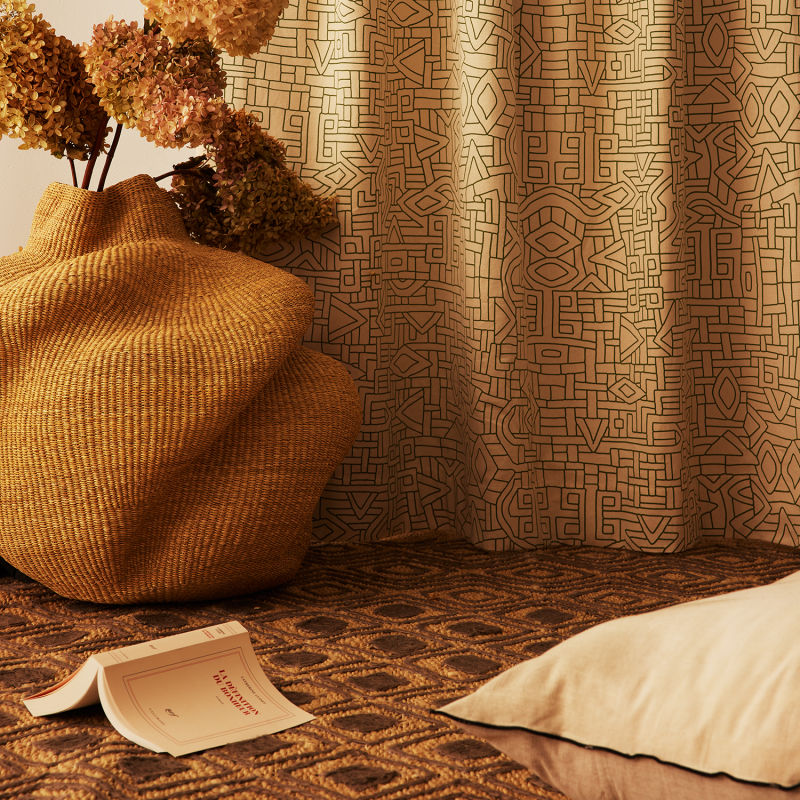The Goodee Rug Guide
Words by Alexia Jacquot
Photography by Samuel Pasquier
Illustrations by Albert Nguyen
The Goodee Rug Guide
Our Essential Guide to Sustainable Rugs You’ll Treasure for a Lifetime
Words by Alexia Jacquot
Photography by Samuel Pasquier
Illustrations by Albert Nguyen
Whether you’re looking for a rug to tie your space together or a statement piece that sets the tone for the room, investing in a good-quality, responsibly hand-crafted rug ensures it will stand up to daily life and last for decades to come (when properly cared for).
We know that purchasing a rug online can be daunting, so here’s our room-by-room guide to choosing a sustainable rug that's perfect for your space. From materials and pile to size and layout, we’ve got you — and your floor — covered.

Nanimarquina Hayon X Nani Runner - photography courtesy of Nanimarquina
Responsible Rugs for Every Room in Your Home
Entryways & Hallways
These spaces usually see a lot of action, so choose a hardwearing rug that is easy to clean, such as a flat-weave or a low pile rug (where fibers are shorter and dense). What’s more, a detailed pattern is always a good idea to help camouflage stains in between cleanings. Anchor your space with a rug runner if it is long and narrow.
Best materials: Sisal and wool (or a combination of) are top choices as they’re attractive, easy to maintain, and extremely durable. A jute, wool, and cotton blend like the Bagrana by Manglam Arts will work wonderfully as well. Otherwise, consider an indoor-outdoor rug made from 100% recycled PET fibers.
Avoid: Warm and cozy high-pile rugs may give off a welcoming vibe but they will get worn down more quickly in areas with a lot of traffic.
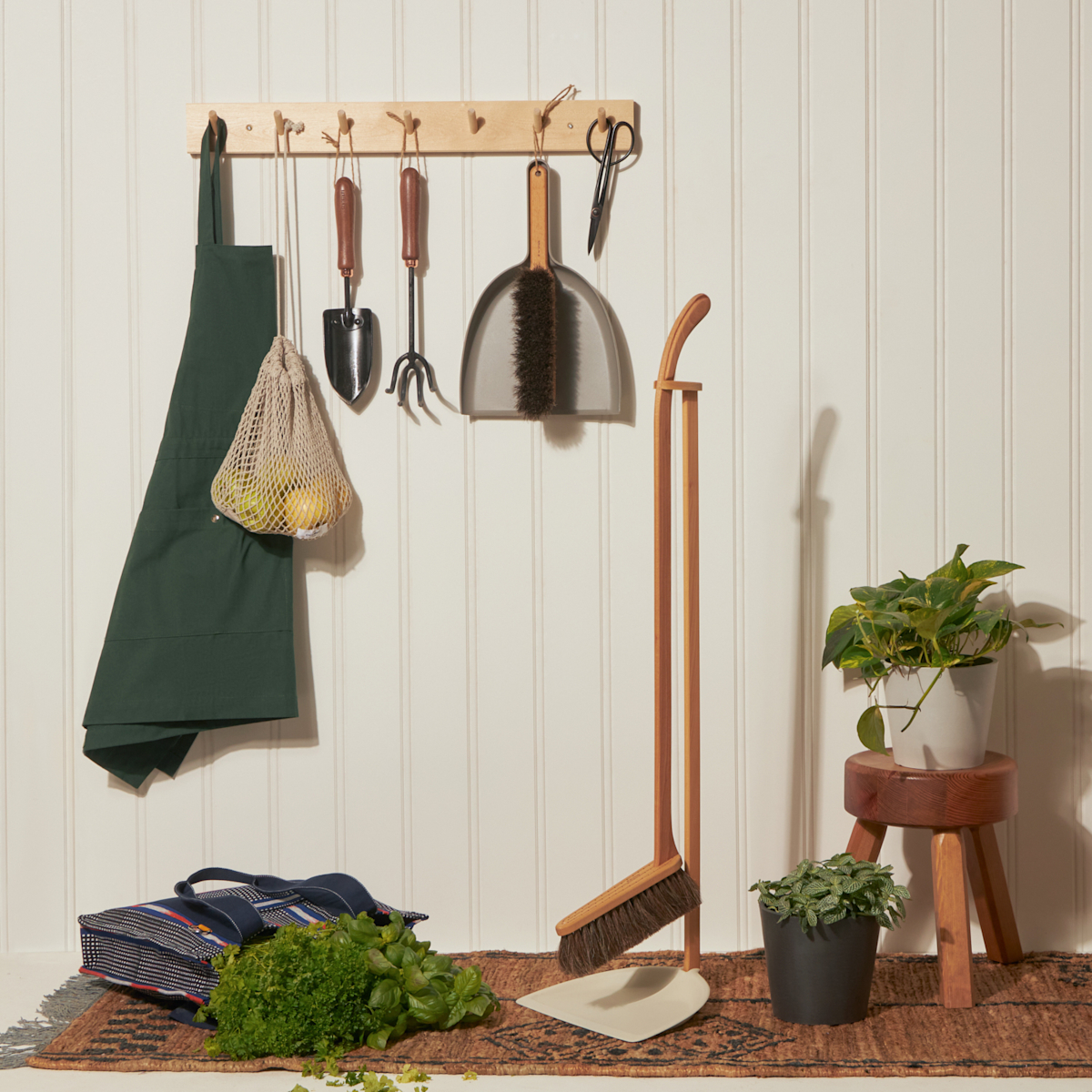
Manglam Arts Sumak Runner - Jhotwara - photography by Jodi Heartz and Alex Blouin
Kitchen
Is your kitchen the beating heart of your home? Then a hardy flat-weave rug is your best bet. You could center a runner rug in front of the sink to cushion your feet while you wash dishes (and/or between the kitchen counter and an island). Or you could place a large area rug underneath the kitchen table to separate this section from the cooking space. A dark color palette will probably do you right as it won't show every flaw in between cleanings.
Best materials: A cotton rug or runner is ideal as you can throw it in the washing machine when it gets dirty. (This traditionally hand-crafted piece could be just the rug your kitchen needs.) You could also opt for wool because it’s easy to upkeep, or even an indoor-outdoor rug in rPET).
Avoid: Jute rugs as they will hold onto crumbs and debris. They’re also very absorbent, so cleaning up liquid spills will be a challenge.
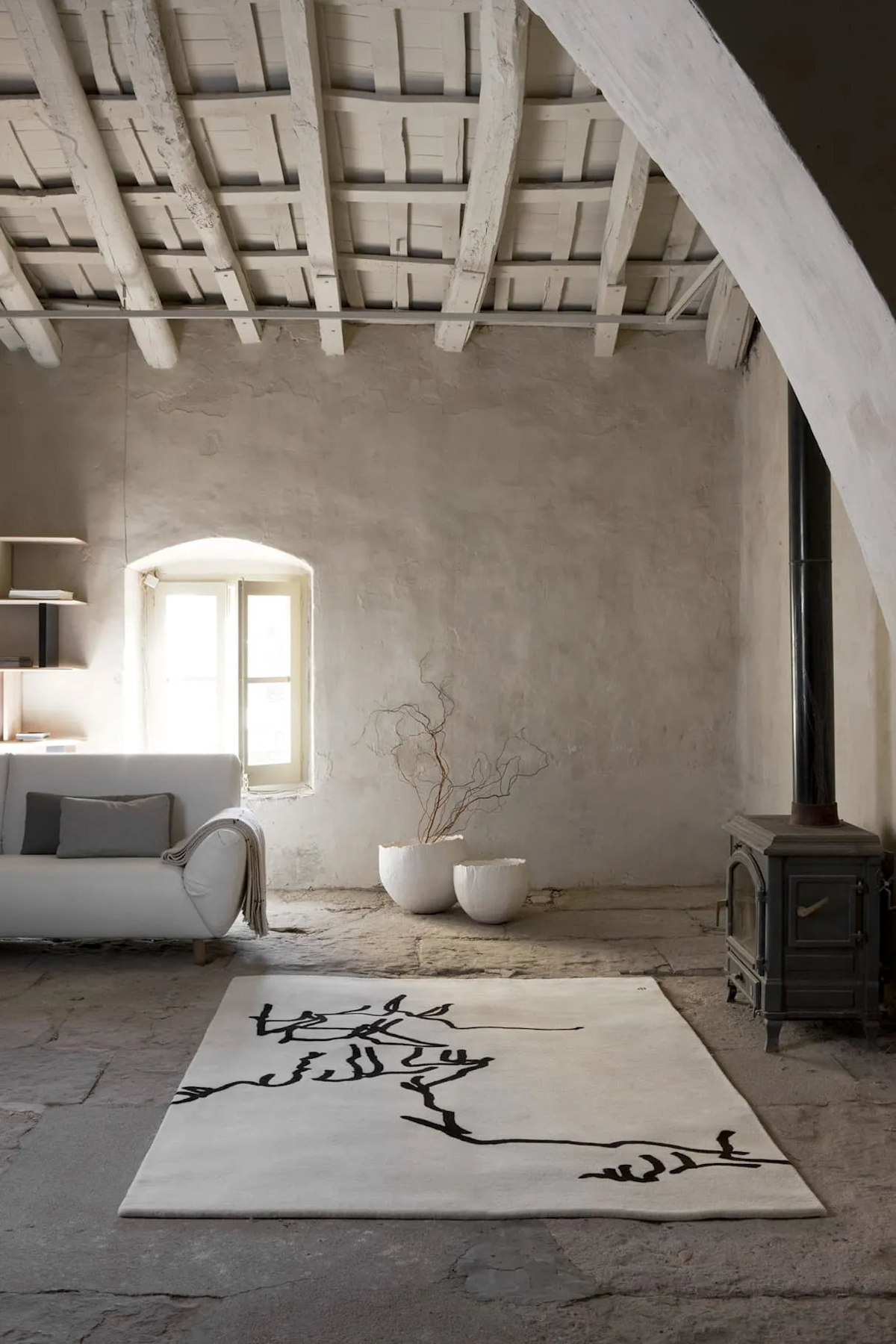
Nanimarquina Chillida Dibujo Tinta 1957 Rug - photography courtesy of Nanimarquina
Living Room
The size of your room and your plans for laying out furniture will dictate your rug placement. (Rugs can also be utilized to define areas more clearly). Have all your pieces of furniture sit comfortably within the rug of your choice to create a sense of balance. If your sofa is against a wall, have the front legs of your sofa and armchairs sitting on the rug. Note that most living rooms should be able to handle 8 ft. x 10 ft. or 9 ft. x 12 ft. rugs, depending on the layout.


Nanimarquina Tres Rug - Vegetal - photography courtesy of Nanimarquina
Best materials: Hand-woven jute rugs as they add natural beauty and a sense of warmth to living and family rooms. If you have kids or pets, they’ll love the smooth texture of a jute and cotton blend, like this beautifully crafted sumak rug by Manglam Arts (so comfortable it could easily become a gathering space for game or movie nights).

Manglam Arts Sumak Rug - Vidhani
Dining Space
Placing a rug in the dining room is essentially all about the experience of sitting at the dining table. Choose a rug in the same shape as your table, making sure it's large enough to accommodate all of the chairs even when they’re pulled away from the table (if your table has extension leaves, don’t forget to take into account the length of your table fully extended). Also, there should be equal amounts of space on the sides of the rug for a balanced effect.


Manglam Arts Cotton Rug - Hawa Mahal
Best materials: Your rug will have heavy pieces of furniture sitting on it, chairs will be pulled out and pushed in, and there will be crumbs as well as the occasional spill so go for a flatweave or low-pile wool design (preferably with patterns to disguise stains you can't get to right away).
Avoid: Cotton rugs as they will likely wear down quicker.

Nanimarquina Tres Rug - Black - photography courtesy of Nanimarquina
Bedrooms
The bed being the focal point, plan the rug size and placement around it. One option is to lay the rug perpendicular to the bed (centered on top), stopping a few inches before your nightstands. In this type of layout, an 8 ft. x 10 ft. or 9 ft. x 12 ft. rug will work a treat as it’ll fit the lower two-thirds of a queen-size or king-size bed. If you want it to span the width of a king-size bed and both night stands, pick a 12 ft. by 15 ft. rug. In smaller bedrooms, runners that run the entire bed length will be a better option.


Best materials: The softest natural rug materials are wool and cotton. Consider a longer, plusher pile to give your feet a smooth landing when you step out of bed.

Nanimarquina Capas Rugs - photography courtesy of Nanimarquina
Kids’ Rooms
Kids (and parents, by extension) often find themselves playing, learning, crawling — and even napping — on the floor. So get a rug that’s long-lasting yet cozy enough to fall asleep on. You'll probably want one that's easy to clean too (or at least, one that hides stains until you can take care of them).
Best materials: Wool rugs are both durable and soft, making them one of the best options for a kid’s room. Cotton rugs are also comfy enough for daily play sessions, with the added benefit of being machine washable.
Bathroom
If your bathroom has plenty of floor space, why not add a touch of cozy with a rug or runner (in addition to your bath mat)? Place yours in the middle of the room or in front of a vanity mirror or sink to anchor your space. And since bathrooms are typically the most humid area of the home, opt for a washable design or one that is made from a water-resistant material.
Best materials: A rug crafted from recycled PET is perfect for humid environments, and it will give you the look and feel of wool. Cotton or wool work as well

Nanimarquina Flora Bloom 1 Rug - photography courtesy of Nanimarquina
Office Space
Looking for an accent piece to lay beneath your desk? Be sure to choose an office-chair-friendly rug with a flat and tight weave that will allow your chair to glide seamlessly across it.
Best materials: Choose a flatweave wool rug for a cozy feeling underfoot. (This stunning number by Manglam Arts would easily warm up a workspace.) Otherwise, jute with a tight weave is the way to go. (Don’t rule out a hand-crafted indoor-outdoor rug in rPET).
Avoid: Stay away from thick, high-pile rugs which are more likely to get caught underneath the chair wheels.
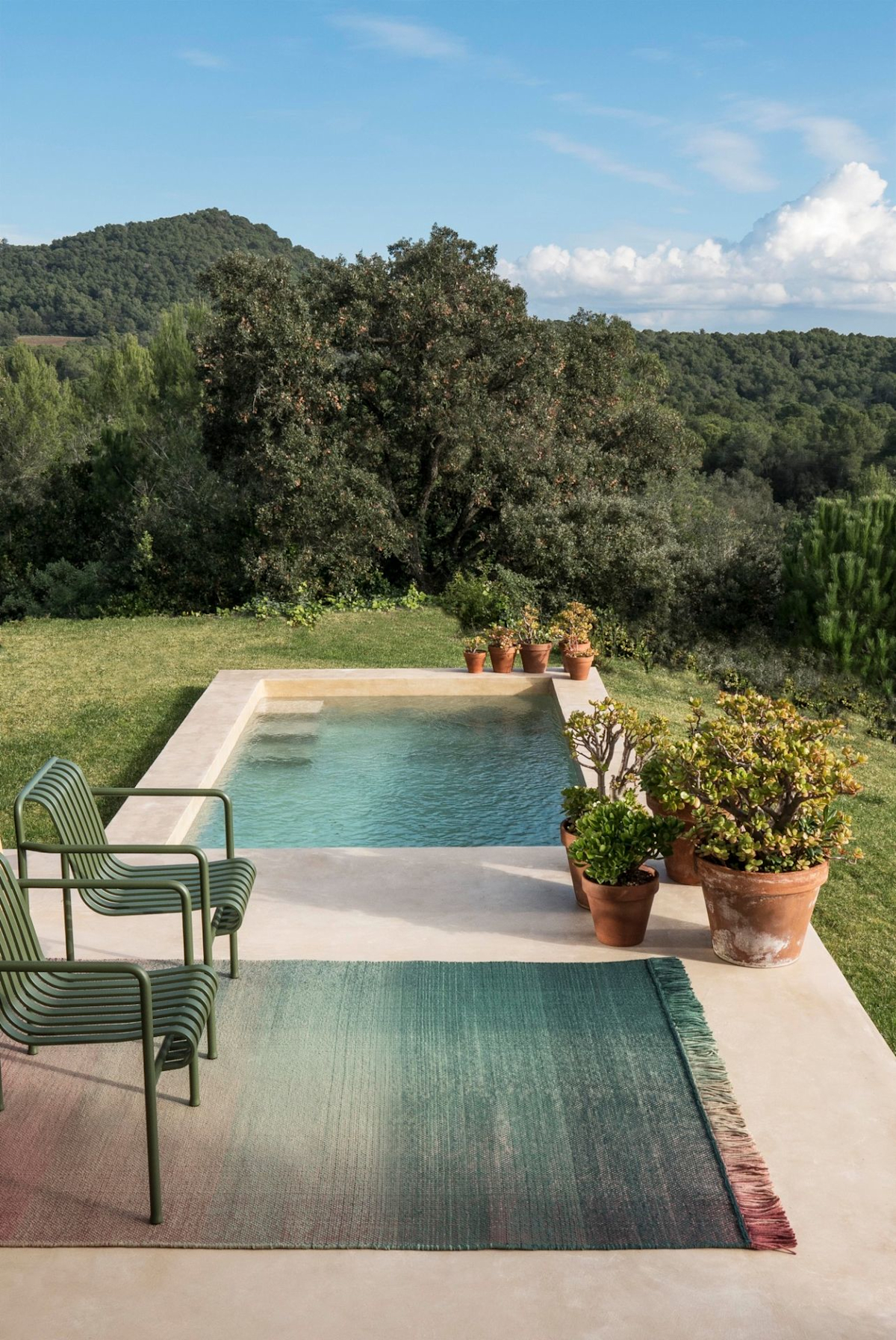
Nanimarquina Shade Outdoor Rug - Palette 3 - photography courtesy of Nanimarquina
Outdoor Space
A rug will make your patio, porch, or deck feel a lot cozier (and comfier for bare feet, pet paws, and crawling children). Pick one that’s weather-resistant, so you can leave it outside on rainy days. If your space is covered, a natural-fiber indoor rug will work just as well — simply make sure it has a loose weave so you can shake out crumbs.
Best materials: Weather resistant, super durable, and easy to clean, an indoor-outdoor rug made from 100% recycled PET fibers, such as the exquisite Shade by nanimarquina, will last more than a few summers.
Natural and Eco-Friendly Rug Materials For a Conscious Home

Manglam Arts Cotton Rug - Suraj Pol
Cotton
Usually made in a flat weave design (like dhurrie and kilim rugs), cotton is known for being soft on the feet and fairly durable. It has a lighter feel and texture, making cotton rugs ideal for summer living. It is often woven together with other natural fibers, lending its softness to materials like sisal and jute to create flat-weave rugs that work well in high-traffic spaces. While not as long-lasting as wool, cotton rugs are an attractive alternative, especially for those who are allergic to wool.
How to make your cotton rug last: Easy to care for, it can be machine-washed, depending on the size.
Jute
Jute fibers come from the stalk of the jute plant, a rain-fed crop mainly grown in eastern India and Bangladesh that requires little to no fertilizer or pesticide. Typically free from chemical processing, it is fully biodegradable at the end of its life, making it one of the most sustainable rug materials. Jute comes in a wide range of weave patterns and adds the perfect amount of organic texture to any space. The material may feel rough at first but it becomes softer over time. A jute rug will do best in low to medium-traffic rooms or barefooted areas. It’s also an excellent base option for layering rugs.
How to make your jute rug last: Jute (like sisal) is very absorbent and easily stained so it will not do so well in areas prone to moisture, such as the kitchen or bathroom. Blot spills quickly and vacuum regularly (go through both sides of the rug, following the weave, to eliminate trapped dust and dirt). If your jute rug does get wet, hang it up to dry as soon as possible to limit the risk of creating a breeding ground for bacteria and mould.
Recycled PET
Recycled PET, also known as rPET or recycled polyester, is obtained by melting down existing PET plastic (that would otherwise find its way into the ocean or landfill) and spinning it into yarn-like fibers. It makes for a durable, easy-to-maintain material that feels soft and cozy underfoot and will not become moldy when exposed to the elements.
How to make your recycled PET rug last: Shake it off or vacuum for dust and dirt. To remove a stain, use a wet sponge or cloth with mild detergent and wipe the stain immediately.
Sisal
Sisal is a fiber made from a Mexican agave plant of the same name. It is both renewable and biodegradable. Very hardwearing (even more so than jute), it’s perfect for high-traffic areas, such as your living room or hallway, and in areas of your home where indoor and outdoor traffic is common. Sisal can be more coarse underfoot than jute and cotton. It’s an excellent base option for layering rugs.
How to make your sisal rug last: Although the fiber is hardwearing, it must not get wet as water will stain and expand the fibers. Vacuum regularly and remove spills quickly.

Flora Backyard Rug Nanimarquina - photography courtesy of Nanimarquina
Wool
Wool is a 100% natural, renewable, and biodegradable fiber. Combining durability with softness and comfort, it is ideal for spaces where you spend a lot of time. Plus, it offers outstanding insulating properties. Wool is a naturally resilient fiber, which makes it an excellent choice if you have kids or pets running around or for areas with high foot traffic. (Look for wool coming from high-altitude areas as this can make the fibers even more durable.) A wool rug is an investment piece that will last a lifetime.
How to make your wool rug last: Upkeep is minimal — simply vacuum regularly and clean spills with a damp cloth. Your rug may shed a bit initially, meaning you’ll have to do a little extra vacuuming at first.
Versatile Hand-crafted Rug Types You’ll Love
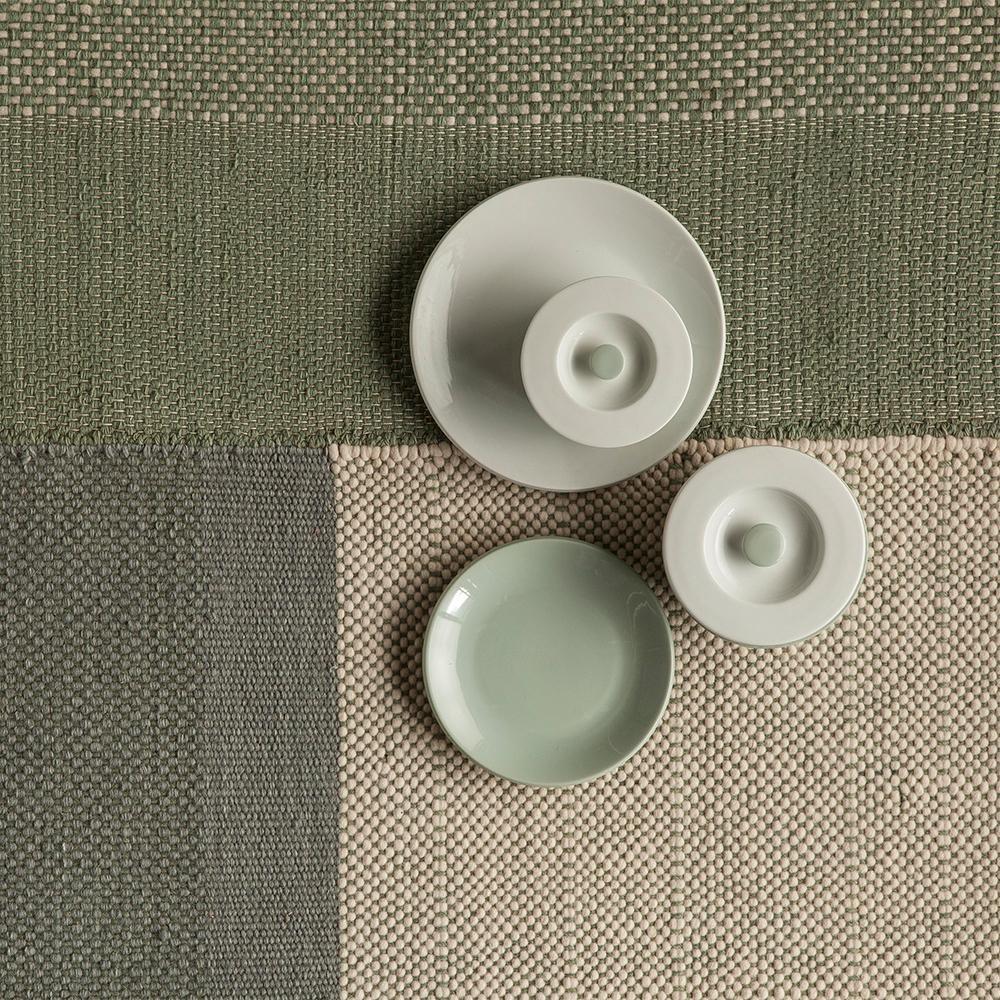
Nanimarquina Tres Rug - Salvia - photography courtesy of Nanimarquina
Dhurrie
A dhurrie rug is a thin flat-woven rug that could be described as the Indian cousin of a Persian kilim rug. Still created according to centuries-old techniques, dhurries are generally crafted from cotton or wool (or a combination of both) in lighter, more pastel colors. Dhurries are reversible, with a tight weave that makes them durable and easy to clean.

Nanimarquina Tones Kilim Rug photography courtesy of Nanimarquina
Kilim
Kilim refers to flat-woven rugs, which nomadic communities have produced for thousands of years across the former Persian Empire. Traditionally, these pileless rugs are crafted from vegetable-dyed wool in simple and bold geometric designs. Today, most kilims are hand-woven from wool and cotton, with a tight weave that makes them durable and easy to clean.
Sumak
Like kilims and dhurries, sumak (or soumak) rugs are crafted with a loom, using a flat weaving technique. However, with the sumak, the threads are not cut off at the back. Instead, they are left to hang free, meaning that sumak rugs are not reversible (unlike kilims). It is believed that the word “sumak” is derived from the town of Shemakha in the foothills of the Caucasus Mountains.

Alexia is an all-round writer with a multicultural perspective. A serial expat from early childhood, she has developed a strong social and environmental awareness along with a keen interest in world history and cultures. Now Singapore-based, she continues to channel her talents to help make the world a better place.

About Alexia Jacquot
Products in this story
More Good Stories
Kashiwa Craft: Shaped by Hand, Guided by Nature
Miyuki and Hisato Iwatsuki on carrying Seto’s legacy forward with warmth.
Rooted in Craft, Connected by Purpose: A Collaboration with EarthSeed Farm
From Clay to Craft: Inside the World of Bergs Potter
Giving Old Toys New Life: The Sustainable Vision of ecoBirdy
As one of the innovative maker partners in our community, ecoBirdy demonstrates that sustainability and design excellence can go hand in hand.




















